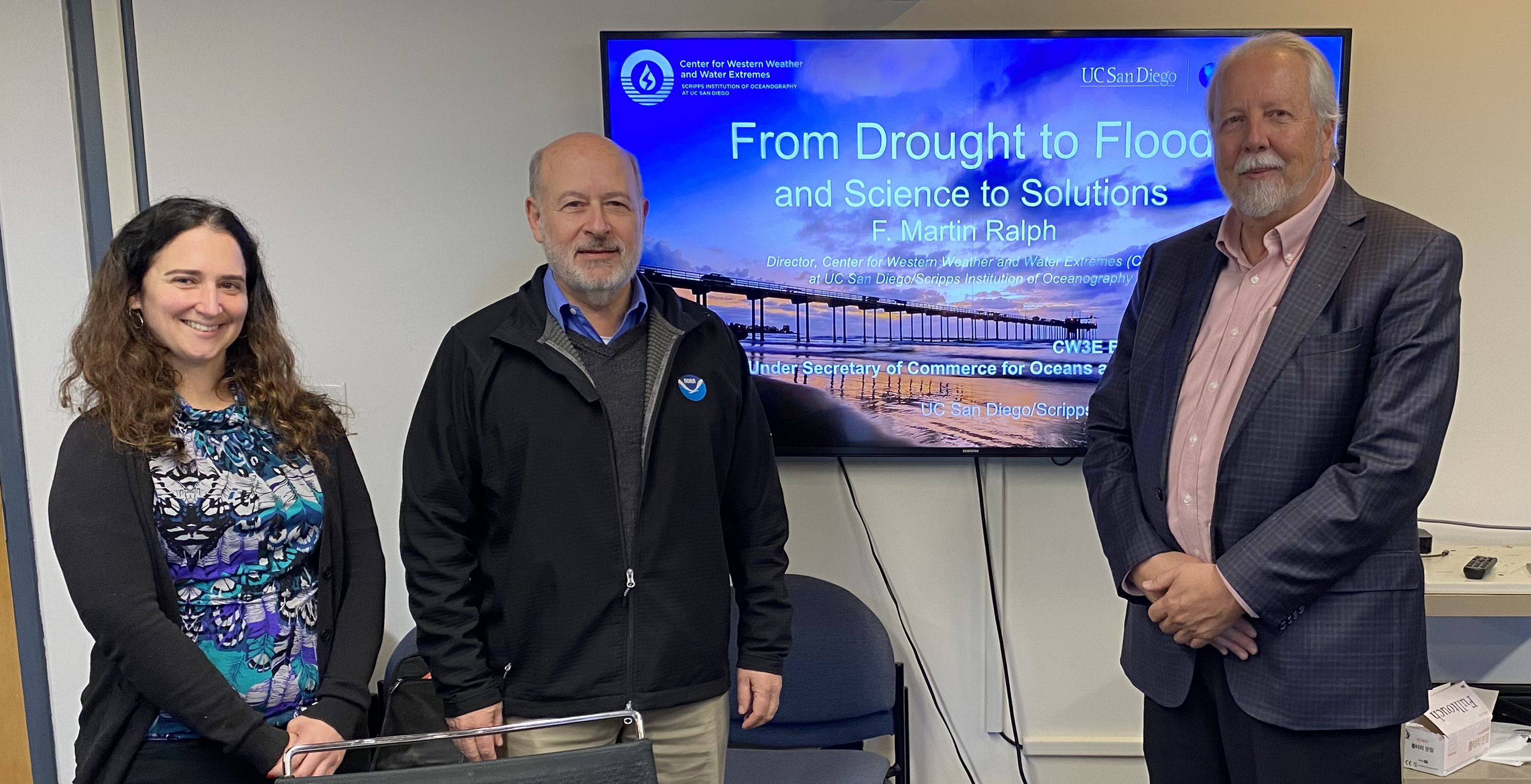CW3E Leadership Meets with Dr. Rick Spinrad, Under Secretary of Commerce for Oceans and Atmospheres & NOAA Administrator
February 16, 2023
CW3E Director, Marty Ralph, and Field Research Manager, Anna Wilson, met with Dr. Rick Spinrad, the Under Secretary of Commerce for Oceans and Atmospheres & NOAA Administrator, on 15 February 2023 at Scripps Institution of Oceanography. Discussion focused on the unique challenges around water in the western US, including conditions that vary more dramatically between wet and dry than elsewhere in the nation. The importance of water to the western environment and economy was highlighted along with the vital role of the west coast states in the US economy. These states represent roughly 20% of the entire US economy, including California, at 15% of US GDP, which is by far the largest contributor of any of the 50 states.
The role of atmospheric rivers as the drivers of both flood and drought was described and efforts to better understand, observe and predict them were summarized. Advances in modeling, with West-WRF and its super-ensemble, machine learning research and other topics were described. The AR Scale was discussed deeply, including its primary role as a situational awareness aid, with the associated need for experienced forecasters to translate that into point forecasts that factor in antecedent conditions on the ground. AR Recon was described as a breakthrough in improving west coast precipitation forecasts through our CW3E Research And Operations Partnership with NWS, OMAO, the Air Force/Weather Reconnaissance Squadron and other agencies and universities. The use of dropsondes, drifting buoys and airborne radio occultation were highlighted. The need for extending the AR Recon operating season to start in November and to expand coverage to the western Pacific were noted. Finally, the Forecast-Informed Reservoir Operations program was summarized, as well as its use of, and need for, accurate AR forecasts.
CW3E is very appreciative of the chance to meet with Dr. Spinrad and his colleagues from the NOAA Corps who accompanied him, to share our work, receive feedback, discuss key topics and consider the future.

